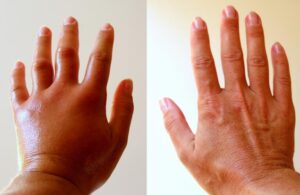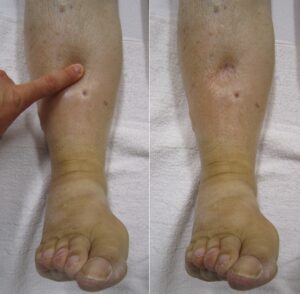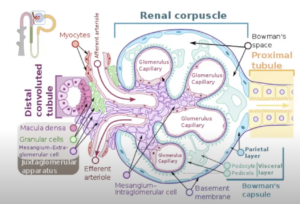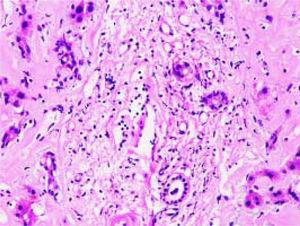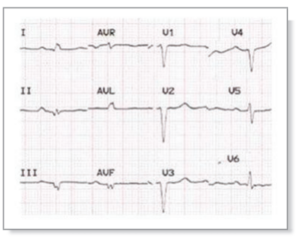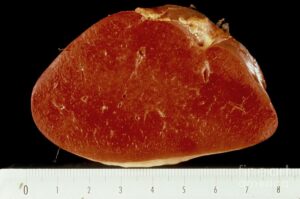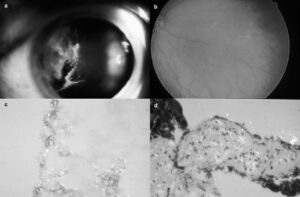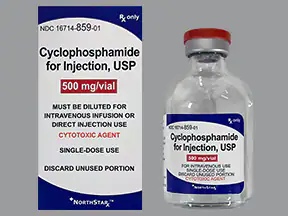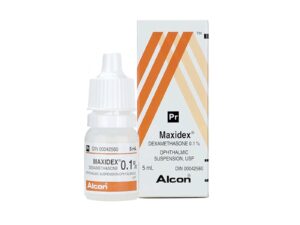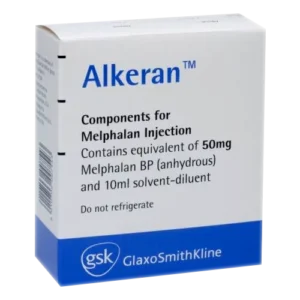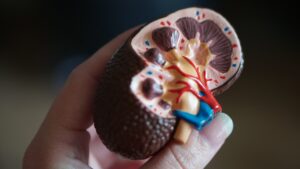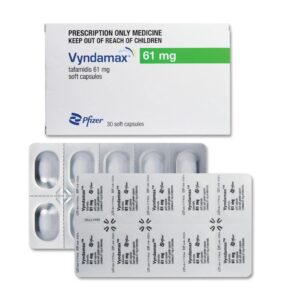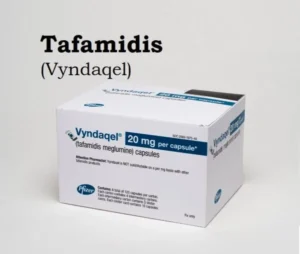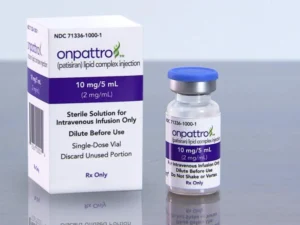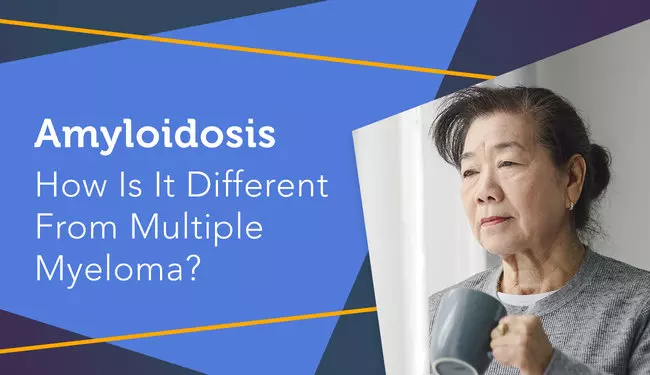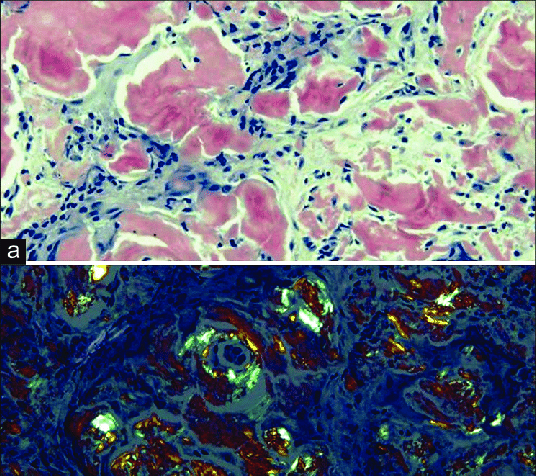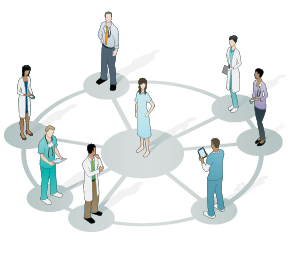oAv now offers weekly amyloidosis patient education and support sessions.
Click to view upcoming sessions
Click to view upcoming sessions
Welcome to
the Amyloidosis
Patient Care Center
Amyloidosis
Amyloidosis
Amyloidosis
Amyloidosis
Amyloidosis
Amyloidosis

AL (Primary) amyloidosis
AL (primary) amyloidosis is the most common form of the disease. The body’s immune system produces abnormal forms of antibodies called “light chains,” (the “L” in “AL” amyloidosis). Normally, cells in the bone marrow produce proteins called antibodies that fight infections.
Chest Pain (Cardiac Amyloidosis)
Chest pain is a frequent symptom in patients with cardiac amyloidosis (CA) and is associated with a more advanced cardiac impairment. [source: International Journal of Cardiology]
Shortness of breath when lying flat (Orthopnea)
People with more severe heart failure may experience shortness of breath when they lie down. The medical term for this symptom is orthopnea (say “or-THAWP-nee-uh”). The severity of this symptom usually depends on how flat you are lying—the flatter you lie, the more you feel short of breath.
Frothy/Bubbly Urine (Kidney Damage)

Foamy urine is a sign of protein in the urine, which is not normal. “Kidneys filter the protein, but should keep it in the body,” explains Dr. Ghossein. If kidneys are releasing protein into the urine, they are not working properly.
Fluid Swelling (Peripheral Edema) hands, legs or feet
If the amyloidosis affects the kidneys, their ability to filter the blood becomes impaired. Protein leaks from the blood into the urine. The loss of protein from the blood can cause fluid to leak out of the blood vessels, resulting in swelling in the feet, ankles and calves.
Protein in the Urine (Nephrotic Syndrome)
Nephrotic syndrome is usually caused by damage to the clusters of small blood vessels in your kidneys that filter waste and excess water from your blood. The condition causes swelling, particularly in your feet and ankles, and increases the risk of other health problems.
Enlarged Liver – Primary Hepatic Amyloidosis (PHA)
Primary hepatic amyloidosis (PHA) is characterized by abnormal deposition of monoclonal immunoglobulin light chains (AL) in the liver. This rare condition is frequently undiagnosed or misdiagnosed and can be associated with poor prognosis. At present, the precise pathogenesis is not fully understood.
Infrequent Urination (Kidney damage)
Most commonly, amyloid deposits build up in the heart and kidneys. Roughly 70% of patients have involvement with either of these organs, notes Dr. Weiss.
Weight Loss / Loss of Appetite (Kidney Damage / Gastrointestinal Amyloidosis)
Low QRS voltages (LQRSVs) (Cardiac Amyloidosis)
Typical ECG of a patient with cardiac AL amyloidosis showing low QRS voltages in the limb leads and pseudoinfarction pattern in the chest leads. (from Updates in Cardiac Amyloidosis: A Review; Banypersad S et al; J Am Heart Assoc 2012)
Tingling Sensation in the Hands and Feet (Amyloid Neuropathy)
Peripheral neuropathy is a common manifestation of AL amyloidosis, and the incidence of peripheral neuropathy in AL amyloidosis varies from 9.6 to 35% (3–5). The typical pattern of amyloid neuropathy is symmetrical, length-dependent, lower-limb predominant, slowly progressing polyneuropathy, with severe pain. [source: NIH]
- NIH: Light-Chain Amyloidosis With Peripheral Neuropathy as an Initial Presentation
- Video: Neurological Manifestations of Amyloidosis
- Light-Chain Amyloidosis With Peripheral Neuropathy as an Initial Presentation
- Video: ARC Talks: Amyloid Neuropathy Burden and Management
- Video: Peripheral Neuropathy and Amyloidosis – Part 01
- Video: Peripheral Neuropathy and Amyloidosis – Part 02
Diarrhea / Constipation (Gastrointestinal Amyloidosis)
Enlarged Tongue (Macroglossia) – Sometimes with rippled edges
An enlarged tongue (macroglossia) can be a sign of amyloidosis. It can sometimes also appear rippled along its edge.
Purple lesions on the skin (Purpura)
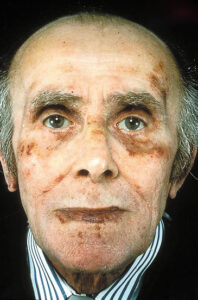
Spleen
While amyloidosis may be systemic or localized, splenic involvement is fairly common (5–10%) and generally asymptomatic [3]. When splenic rupture secondary to localized amyloidosis occurs, it is usually the first manifestation of the disease process. This case illustrates spontaneous splenic rupture due to localized amyloidosis as an important consideration in the differential of acute abdominal pain. It also highlights amyloidosis as a potential marker for other systemic disease that may only be recognized or investigated after splenic pathology is elucidated.
Fatigue (Cardiac Amyloidosis / General Organ Stress)
When amyloid proteins overwhelm your organs, you may not have the energy and strength you once had. Amyloidosis can cause severe, unusual fatigue. You may not feel up to doing the activities you once enjoyed. You may even need frequent naps during the day. [source: healthline]
Primary nonfamilial ocular amyloidosis
Ocular amyloidosis is a rare cause of vitreous haze1,2 and should be included in the differential diagnosis of vitreous opacification. The ophthalmologist should be aware that ocular amyloidosis may occur sporadically and that vitreous biopsy with specific staining with Congo red dye may be indicated.
Carpal Tunnel Syndrome (Amyloid Neuropathy)
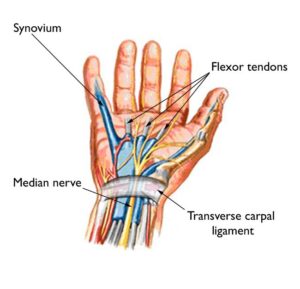
In patients undergoing surgery for idiopathic CTS, a recent study identified amyloidosis by tenosynovial biopsy in 10.2% of men older than 50 years and women older than 60 years; all positive patients had bilateral symptoms. [source: NIH]
Standard Treatment: A medical Cocktail
What you can expect. If you have been diagnosed with AL amyloidosis the standard chemotherapy treatment in the United States consists of a 4 drug combination of subcutaneous daratumumab, bortezomib, cyclophosphamide, and dexamethasone.
Bortezomib (VELCADE®)
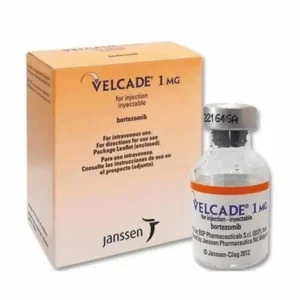
VELCADE (bortezomib) is a type of chemotherapy called a targeted therapy.
VELCADE belongs to a class of medicines called proteasome inhibitors. It is approved by the FDA for the treatment of multiple myeloma and mantle cell lymphoma. VELCADE has been studied in many important clinical trials. It has been studied in a wide range of people, including those with renal impairment and diabetes. As a targeted therapy, VELCADE works by blocking or slowing down the action of proteasomes inside cells. The function of proteasomes is to break down proteins in both healthy and cancerous cells.
- Website
- Takeda Patient Support 1-866-861-1750, Monday through Friday, 8 AM to 8 PM ET.
- Treatment Guide
- Financial Assistance Guide
- VIDEO: CVS Specialty services for patients taking Velcade
Cyclophosphamide (Cytoxan®, Neosar®)
Dexamethasone (Ozurdex, Maxidex)
The use of cyclophosphamide (Cy), bortezomib (Bor), and dexamethasone (D), the CyBorD regimen, to treat AL amyloidosis, caused by a non-immunoglobulin M (IgM) monoclonal gammopathy, has significantly improved survival outcomes [10]: CyBorD results in a complete hematologic response of 71% and a 1-year OS of 65%
Melphalan (Alkeran)
Melphalan belongs to the group of medicines called alkylating agents (cancer medicines). It works by interfering with the growth of cancer cells, which are eventually destroyed by the body. Since the growth of normal cells may also be affected by melphalan, other unwanted effects will also occur.
Daratumumab (Darzalex®)
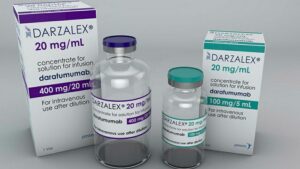
Daratumumab is an anti-cancer monoclonal antibody medication. It binds to CD38, which is overexpressed in multiple myeloma cells. In May 2018, the U.S. Food and Drug Administration (FDA) approved daratumumab for use in combination with bortezomib, melphalan and prednisone to include the treatment of people with newly diagnosed multiple myeloma who are ineligible for autologous stem cell transplant. [source:wikipedia]
- How do you pronounce “Daratumumab”?
- VIDEO: Understanding Darzalex Faspro
- Financial Assistance
- Janssen CarePath Care Coordinator (844) 553-2792
Bone Marrow / Stem Cell Transplant
Stem cell transplantation (SCT) is an effective treatment for amyloidosis , but it’s not a cure. Amyloidosis will return in everyone. However, some patients have been successfully treated with SCT and have been able to receive another SCT when their disease progressed.
- UChicago Medicine – Treating Cardiac Amyloidosis
- VIDEO: Amyloidosis – diagnosis and stem cell transplantation
- The Role of Autologous Stem Cell Transplantation in Amyloidosis
- Stem-cell Mobilization and Autologous Transplant for Immunoglobulin Light Chain Amyloidosis
- Social Wall: Chemotherapy and Bone Marrow Transplant
- Social Wall: 12 months post Bone Marrow Transplant
Care Team Basics
Studies have found that patients who receive care from a coordinated care team have better health outcomes, including lower rates of hospitalization and mortality. They also have higher rates of satisfaction with their care.
A care team is a group of healthcare professionals who work together to provide care for a patient. The care team may include doctors, nurses, therapists, social workers, and other specialists. The team works together to develop a plan of care and coordinate services.
Care Team Coordinator
A care coordinator is a health care professional responsible for managing patient care by monitoring treatment plans, educating patients on their conditions, and connecting them to relevant health care providers.
Cardiologist (Heart)
A cardiologist is a physician who’s an expert in the care of your heart and blood vessels. They can treat or help you prevent a number of cardiovascular problems. They can also specialize in specific areas, such as abnormal heart rhythms, heart failure or heart problems you’ve had since birth. [source: Cleveland Cllinic]
Nephrologist (Kidneys)
A nephrologist is a medical doctor who specializes in kidney care and treating diseases of the kidneys. The term nephrologist comes from the Greek word “nephros”, which means kidney or renal and “ologist” refers to someone who studies. Nephrologists are also called kidney doctors.
Oncologist (Cancer)
Oncology is the study of cancer. An oncologist is a doctor who treats cancer and provides medical care for a person diagnosed with cancer. An oncologist may also be called a cancer specialist. The field of oncology has 3 major areas based on treatments: medical oncology, radiation oncology, and surgical oncology.
Hematologist (Blood)
Hematologists and hematopathologists are highly trained healthcare providers who specialize in diseases of the blood and blood components. These include blood and bone marrow cells. Hematological tests can help diagnose anemia, infection, hemophilia, blood-clotting disorders, and leukemia. [source: Hopkins Medicine]
Neurologist (Brain & Nervous System)
A neurologist is a medical doctor with specialized training in diagnosing, treating, and managing disorders of the brain and nervous system including, but not limited to, Amyloidosis, Alzheimer’s disease, amyotrophic lateral sclerosis (ALS), concussion, epilepsy, migraine, multiple sclerosis, Parkinson’s disease, and stroke.
Immunologist (Immune System)
Immunologists are research scientists or practicing specialists who study, analyze and/or treat disease processes that involve the immune system.
Pulmonologist (Respiratory System/Lungs)
A pulmonologist is a physician who specializes in the respiratory system. From the windpipe to the lungs, if your complaint involves the lungs or any part of the respiratory system, a pulmonologist is the doc you want to solve the problem.nPulmonology is a medical field of study within internal medicine. [source: American Lung Association]
Psychologist (Emotional Wellbeing)
A psychologist is a mental health professional who uses psychological evaluations and talk therapy to help people learn to better cope with life and relationship issues and mental health conditions. [source: Cleveland Clinic]
Social Worker
Social workers assist a range of patient populations and provide services in areas including mental health conditions and addictions, chronic disease, children and youth illnesses, geriatrics illnesses, grief, trauma, parenting issues, palliative care, dementia and other neurological issues, financial stressors, housing issues and a broad range of other general psychosocial issues (Ashcroft et al. 2018; McGregor et al. 2018; Sverker et al. 2017).
Google News – Search Comprehensive up-to-date news coverage, aggregated from sources all over the world by Google News.
-
Immix Biopharma Awarded European Union Orphan Drug Designation for NXC-201 in AL Amyloidosis
by MarketScreener on February 7, 2024 at 2:37 pmEuropean Orphan Drug Designation qualifies NXC-201 for: 10 years of market exclusivity once authorized in the EUAccess to the EU centralized authorization procedureReduced fees for EU protocol…
-
Attralus Closes $56 Million Financing
by Attralus, Inc on February 6, 2024 at 12:00 amAttralus, Inc. today announced that it has closed a $56 million financing….
-
Could we be on our way to eliminating cancer for good?
by JNJ.com on February 2, 2024 at 4:02 pmWhat once seemed like an out-of-reach goal may soon be within our grasp. Take an in-depth look at how Johnson & Johnson is working toward its vision of helping create a world without cancer.
-
AFFIRM-AL: Birtamimab in Patients with Mayo Stage IV AL Amyloidosis
by OncLive on February 2, 2024 at 2:20 pm -
Novel Treatment Approaches with mAbs Targeting Amyloid Deposits: Insights from VITAL
by OncLive on February 2, 2024 at 2:15 pm
Amyloidosis

AA (Secondary) Amyloidosis
AA (secondary) amyloidosis is characterized by a protein called “serum amyloid A.” This protein is produced by the body in response to inflammation or infection.
Long-lasting infections or chronic inflammatory conditions such as rheumatoid arthritis, inflammatory bowel disease, familial Mediterranean fever, and tuberculosis can trigger a protein to build up and cause AA amyloidosis.
Enlarged Kidney (Kidney Damage)
Frothy/Bubbly Urine (Kidney Damage)

Foamy urine is a sign of protein in the urine, which is not normal. “Kidneys filter the protein, but should keep it in the body,” explains Dr. Ghossein. If kidneys are releasing protein into the urine, they are not working properly.
Fluid Swelling (Peripheral Edema) hands, legs or feet
If the amyloidosis affects the kidneys, their ability to filter the blood becomes impaired. Protein leaks from the blood into the urine. The loss of protein from the blood can cause fluid to leak out of the blood vessels, resulting in swelling in the feet, ankles and calves.
Infrequent Urination (Kidney damage)
Most commonly, amyloid deposits build up in the heart and kidneys. Roughly 70% of patients have involvement with either of these organs, notes Dr. Weiss.
Low QRS voltages (LQRSVs) (Cardiac Amyloidosis)
Typical ECG of a patient with cardiac AL amyloidosis showing low QRS voltages in the limb leads and pseudoinfarction pattern in the chest leads. (from Updates in Cardiac Amyloidosis: A Review; Banypersad S et al; J Am Heart Assoc 2012)
Nausea & Vomiting
Low Blood Pressure
Cyclophosphamide (Cytoxan®, Neosar®)
Dexamethasone (Ozurdex, Maxidex)
The use of cyclophosphamide (Cy), bortezomib (Bor), and dexamethasone (D), the CyBorD regimen, to treat AL amyloidosis, caused by a non-immunoglobulin M (IgM) monoclonal gammopathy, has significantly improved survival outcomes [10]: CyBorD results in a complete hematologic response of 71% and a 1-year OS of 65%
Melphalan (Alkeran)
Melphalan belongs to the group of medicines called alkylating agents (cancer medicines). It works by interfering with the growth of cancer cells, which are eventually destroyed by the body. Since the growth of normal cells may also be affected by melphalan, other unwanted effects will also occur.
Prednisone (steroid)
Tocilizumab, a humanized monoclonal anti–IL-6 receptor antibody
Care Team Basics
Studies have found that patients who receive care from a coordinated care team have better health outcomes, including lower rates of hospitalization and mortality. They also have higher rates of satisfaction with their care.
A care team is a group of healthcare professionals who work together to provide care for a patient. The care team may include doctors, nurses, therapists, social workers, and other specialists. The team works together to develop a plan of care and coordinate services.
Care Team Coordinator
A care coordinator is a health care professional responsible for managing patient care by monitoring treatment plans, educating patients on their conditions, and connecting them to relevant health care providers.
Cardiologist (Heart)
A cardiologist is a physician who’s an expert in the care of your heart and blood vessels. They can treat or help you prevent a number of cardiovascular problems. They can also specialize in specific areas, such as abnormal heart rhythms, heart failure or heart problems you’ve had since birth. [source: Cleveland Cllinic]
Nephrologist (Kidneys)
A nephrologist is a medical doctor who specializes in kidney care and treating diseases of the kidneys. The term nephrologist comes from the Greek word “nephros”, which means kidney or renal and “ologist” refers to someone who studies. Nephrologists are also called kidney doctors.
Neurologist (Brain & Nervous System)
A neurologist is a medical doctor with specialized training in diagnosing, treating, and managing disorders of the brain and nervous system including, but not limited to, Amyloidosis, Alzheimer’s disease, amyotrophic lateral sclerosis (ALS), concussion, epilepsy, migraine, multiple sclerosis, Parkinson’s disease, and stroke.
Psychologist (Emotional Wellbeing)
A psychologist is a mental health professional who uses psychological evaluations and talk therapy to help people learn to better cope with life and relationship issues and mental health conditions. [source: Cleveland Clinic]
Social Worker
Social workers assist a range of patient populations and provide services in areas including mental health conditions and addictions, chronic disease, children and youth illnesses, geriatrics illnesses, grief, trauma, parenting issues, palliative care, dementia and other neurological issues, financial stressors, housing issues and a broad range of other general psychosocial issues (Ashcroft et al. 2018; McGregor et al. 2018; Sverker et al. 2017).
Rheumatologist (Joints, Muscles and Bones)
Amyloidosis

Hereditary ATTR Amyloidosis
A change to the TTR gene causes familial (hereditary) ATTR-CM. In rare instances, this gene change arises in a person without a family history (a de novo mutation). Black people who were assigned male at birth are more likely to develop familial ATTR-CM.
Regardless of the underlying cause, your body starts to produce faulty TTR proteins. These abnormal proteins break apart, fold up on themselves (misfold) and form clumps of amyloid fibrils. Your blood carries these fibril clumps throughout your body, depositing them in nerves or organs like your heart. Over time, organ or nerve damage occurs.
Chest Pain (Cardiac Amyloidosis)
Chest pain is a frequent symptom in patients with cardiac amyloidosis (CA) and is associated with a more advanced cardiac impairment. [source: International Journal of Cardiology]
Shortness of breath when lying flat (Orthopnea)
People with more severe heart failure may experience shortness of breath when they lie down. The medical term for this symptom is orthopnea (say “or-THAWP-nee-uh”). The severity of this symptom usually depends on how flat you are lying—the flatter you lie, the more you feel short of breath.
Fluid Swelling (Peripheral Edema) hands, legs or feet
If the amyloidosis affects the kidneys, their ability to filter the blood becomes impaired. Protein leaks from the blood into the urine. The loss of protein from the blood can cause fluid to leak out of the blood vessels, resulting in swelling in the feet, ankles and calves.
Low QRS voltages (LQRSVs) (Cardiac Amyloidosis)
Typical ECG of a patient with cardiac AL amyloidosis showing low QRS voltages in the limb leads and pseudoinfarction pattern in the chest leads. (from Updates in Cardiac Amyloidosis: A Review; Banypersad S et al; J Am Heart Assoc 2012)
Tingling Sensation in the Hands and Feet (Amyloid Neuropathy)
Peripheral neuropathy is a common manifestation of AL amyloidosis, and the incidence of peripheral neuropathy in AL amyloidosis varies from 9.6 to 35% (3–5). The typical pattern of amyloid neuropathy is symmetrical, length-dependent, lower-limb predominant, slowly progressing polyneuropathy, with severe pain. [source: NIH]
- NIH: Light-Chain Amyloidosis With Peripheral Neuropathy as an Initial Presentation
- Video: Neurological Manifestations of Amyloidosis
- Light-Chain Amyloidosis With Peripheral Neuropathy as an Initial Presentation
- Video: ARC Talks: Amyloid Neuropathy Burden and Management
- Video: Peripheral Neuropathy and Amyloidosis – Part 01
- Video: Peripheral Neuropathy and Amyloidosis – Part 02
Muscle Weakness
Sexual Dysfunction
Loss of Appetite (Gastrointestinal Amyloidosis)
Nausea & Vomiting
Fatigue (Cardiac Amyloidosis / General Organ Stress)
When amyloid proteins overwhelm your organs, you may not have the energy and strength you once had. Amyloidosis can cause severe, unusual fatigue. You may not feel up to doing the activities you once enjoyed. You may even need frequent naps during the day. [source: healthline]
Low Blood Pressure
Carpal Tunnel Syndrome (Amyloid Neuropathy)

In patients undergoing surgery for idiopathic CTS, a recent study identified amyloidosis by tenosynovial biopsy in 10.2% of men older than 50 years and women older than 60 years; all positive patients had bilateral symptoms. [source: NIH]
Tafamidis (Vyndamax™) – Treats Cardiomyopathy
Tafamidis is an oral medication for treating cardiomyopathy and peripheral neuropathy due to transthyretin amyloidosis (ATTR). It is a transthyretin stabilizer and has been shown to reduce disease progression and mortality significantly.
Vutrisiran (Amvuttra®) – Treats polyneuropathy

In an 18-month clinical study, AMVUTTRA-treated patients showed significant improvement in nerve function and quality of life at 9 months and continued to improve throughout the study, compared with those who received placebo in a similar study. [source: NIH]
- Efficacy and safety of vutrisiran for patients with hereditary transthyretin-mediated amyloidosis with polyneuropathy: a randomized clinical trial
- How Amvuttra helps ATTR-PN Patients
- Alnylam Assist Program
- Alnylam Assist Program FAQ
- Alnylam Case Managers: 1 (833)256-2748 Monday–Friday, 8am–6pm
- Invitae Free genetic screening for ATTRv
- VIDEO: CVS Specialty services for patients taking Amvuttra
Tafamidis Meglumine (Vyndaqel®) Treats Cardiomyopathy
Both Vyndaqel and Vyndamax contain the same active ingredient called tafamidis. The difference between Vyndaqel and Vyndamax lies in the form of tafamidis they contain. Vyndaqel contains the micronized meglumine salt of tafamidis, while Vyndamax contains the free acid form of tafamidis
Inotersen (Tegsedi®) – Treats polyneuropathy
TEGSEDI is the first and only self-administered injection for the polyneuropathy of hATTR amyloidosis in adults. Regular lab monitoring of platelet count and renal liver function is required during treatment with TEGSEDI.
- Website
- Fact Sheet
- Connect with your dedicated Nurse Case Manager and Team TEGSEDI Mentor by contacting AkceaConnect@sobi-psp.com or at 1-866-AKCEATX (1-866-252-3289)
Patisiran (Onpattro®) – Treats polyneuropathy
Patisiran is the first-ever RNA interference drug consisting of short, double-stranded interfering ribonucleic acid (siRNA) encapsulated in a lipid nanoparticle and targeted to inhibit hepatic synthesis of transthyretin, both the wild-type and mutant. [source: Pubmed]
- Pubmed: Patisiran, First Global Approval
- Onpattro Website
- Fact Sheet
- Alnylam Assist Program
- Alnylam Assist FAQs
- Alnylam Case Managers: 1 (833)256-2748 Monday–Friday, 8am–6pm
- Invitae Free genetic screening for ATTRv
- VIDEO: CVS Specialty services for patients taking Onpattro
Heart Transplant
Care Team Basics
Studies have found that patients who receive care from a coordinated care team have better health outcomes, including lower rates of hospitalization and mortality. They also have higher rates of satisfaction with their care.
A care team is a group of healthcare professionals who work together to provide care for a patient. The care team may include doctors, nurses, therapists, social workers, and other specialists. The team works together to develop a plan of care and coordinate services.
Care Team Coordinator
A care coordinator is a health care professional responsible for managing patient care by monitoring treatment plans, educating patients on their conditions, and connecting them to relevant health care providers.
Cardiologist (Heart)
A cardiologist is a physician who’s an expert in the care of your heart and blood vessels. They can treat or help you prevent a number of cardiovascular problems. They can also specialize in specific areas, such as abnormal heart rhythms, heart failure or heart problems you’ve had since birth. [source: Cleveland Cllinic]
Nephrologist (Kidneys)
A nephrologist is a medical doctor who specializes in kidney care and treating diseases of the kidneys. The term nephrologist comes from the Greek word “nephros”, which means kidney or renal and “ologist” refers to someone who studies. Nephrologists are also called kidney doctors.
Neurologist (Brain & Nervous System)
A neurologist is a medical doctor with specialized training in diagnosing, treating, and managing disorders of the brain and nervous system including, but not limited to, Amyloidosis, Alzheimer’s disease, amyotrophic lateral sclerosis (ALS), concussion, epilepsy, migraine, multiple sclerosis, Parkinson’s disease, and stroke.
Psychologist (Emotional Wellbeing)
A psychologist is a mental health professional who uses psychological evaluations and talk therapy to help people learn to better cope with life and relationship issues and mental health conditions. [source: Cleveland Clinic]
Social Worker
Social workers assist a range of patient populations and provide services in areas including mental health conditions and addictions, chronic disease, children and youth illnesses, geriatrics illnesses, grief, trauma, parenting issues, palliative care, dementia and other neurological issues, financial stressors, housing issues and a broad range of other general psychosocial issues (Ashcroft et al. 2018; McGregor et al. 2018; Sverker et al. 2017).
- Prothena Announces Board of Directors Update – Morningstar
on December 12, 2025 at 10:05 pm
… ATTR amyloidosis with cardiomyopathy, Alzheimer’s disease, Parkinson’s disease and a number of other neurodegenerative diseases. For more …
Amyloidosis

Wild-Type ATTR Amyloidosis
Chest Pain (Cardiac Amyloidosis)
Chest pain is a frequent symptom in patients with cardiac amyloidosis (CA) and is associated with a more advanced cardiac impairment. [source: International Journal of Cardiology]
Shortness of breath when lying flat (Orthopnea)
People with more severe heart failure may experience shortness of breath when they lie down. The medical term for this symptom is orthopnea (say “or-THAWP-nee-uh”). The severity of this symptom usually depends on how flat you are lying—the flatter you lie, the more you feel short of breath.
Low QRS voltages (LQRSVs) (Cardiac Amyloidosis)
Typical ECG of a patient with cardiac AL amyloidosis showing low QRS voltages in the limb leads and pseudoinfarction pattern in the chest leads. (from Updates in Cardiac Amyloidosis: A Review; Banypersad S et al; J Am Heart Assoc 2012)
Characteristic discrepancy between peripheral and precordial leads (ATTRcm)
Fatigue (Cardiac Amyloidosis / General Organ Stress)
When amyloid proteins overwhelm your organs, you may not have the energy and strength you once had. Amyloidosis can cause severe, unusual fatigue. You may not feel up to doing the activities you once enjoyed. You may even need frequent naps during the day. [source: healthline]
Carpal Tunnel Syndrome (Amyloid Neuropathy)

In patients undergoing surgery for idiopathic CTS, a recent study identified amyloidosis by tenosynovial biopsy in 10.2% of men older than 50 years and women older than 60 years; all positive patients had bilateral symptoms. [source: NIH]
Tafamidis (Vyndamax™) – Treats Cardiomyopathy
Tafamidis is an oral medication for treating cardiomyopathy and peripheral neuropathy due to transthyretin amyloidosis (ATTR). It is a transthyretin stabilizer and has been shown to reduce disease progression and mortality significantly.
Diuretics (Increase Urination)
Tafamidis Meglumine (Vyndaqel®) Treats Cardiomyopathy
Both Vyndaqel and Vyndamax contain the same active ingredient called tafamidis. The difference between Vyndaqel and Vyndamax lies in the form of tafamidis they contain. Vyndaqel contains the micronized meglumine salt of tafamidis, while Vyndamax contains the free acid form of tafamidis
Care Team Basics
Studies have found that patients who receive care from a coordinated care team have better health outcomes, including lower rates of hospitalization and mortality. They also have higher rates of satisfaction with their care.
A care team is a group of healthcare professionals who work together to provide care for a patient. The care team may include doctors, nurses, therapists, social workers, and other specialists. The team works together to develop a plan of care and coordinate services.
Care Team Coordinator
A care coordinator is a health care professional responsible for managing patient care by monitoring treatment plans, educating patients on their conditions, and connecting them to relevant health care providers.
Cardiologist (Heart)
A cardiologist is a physician who’s an expert in the care of your heart and blood vessels. They can treat or help you prevent a number of cardiovascular problems. They can also specialize in specific areas, such as abnormal heart rhythms, heart failure or heart problems you’ve had since birth. [source: Cleveland Cllinic]
Nephrologist (Kidneys)
A nephrologist is a medical doctor who specializes in kidney care and treating diseases of the kidneys. The term nephrologist comes from the Greek word “nephros”, which means kidney or renal and “ologist” refers to someone who studies. Nephrologists are also called kidney doctors.
Psychologist (Emotional Wellbeing)
A psychologist is a mental health professional who uses psychological evaluations and talk therapy to help people learn to better cope with life and relationship issues and mental health conditions. [source: Cleveland Clinic]
Social Worker
Social workers assist a range of patient populations and provide services in areas including mental health conditions and addictions, chronic disease, children and youth illnesses, geriatrics illnesses, grief, trauma, parenting issues, palliative care, dementia and other neurological issues, financial stressors, housing issues and a broad range of other general psychosocial issues (Ashcroft et al. 2018; McGregor et al. 2018; Sverker et al. 2017).
Google News – Search Comprehensive up-to-date news coverage, aggregated from sources all over the world by Google News.
-
by Nature on November 16, 2023 at 12:00 am
Scientific Reports – Transthyretin amyloid deposition in ligamentum flavum (LF) is significantly correlated with LF and epidural fat hypertrophy in patients with lumbar spinal stenosis
-
by Attralus, Inc on November 7, 2023 at 12:00 am
124I-evuzamitide shown to be highly accurate for detection of cardiac amyloid across two independent investigator-initiated studies.124I-evuzamitide…
-
Understanding ATTR: The Challenges of Amyloidosis
by astrazeneca on October 30, 2023 at 12:00 pm -
by Intellia Therapeutics, Inc. on October 18, 2023 at 12:00 am
NTLA-2001 is the first-ever investigational in vivo CRISPR-based gene editing therapy cleared to enter late-stage clinical development CAMBRIDGE,…
-
Cardiac Transthyretin Amyloidosis With Coincident Paget’s Disease: A Case Report
by cureusinc on July 28, 2023 at 12:00 amCardiac amyloidosis is a condition that results from the accumulation of amyloid proteins in the extracellular matrix of the myocardium. The diagnosis of this disease was challenging as it lacke…
Amyloidosis

Other Types
AApoAII
Cerebral Amyloid Angiopathy (CAA)
Amyloid build up on the walls of the arteries in the brain
Alect2
Patients should receive supportive treatment, as for kidney failure caused by other types of amyloidosis.
Are Some Types of Amyloidosis More Common in Certain Ethnic Groups?
What Are the Unique Symptoms of Different Types of Amyloidosis?
At What Age Do the Different Types of Amyloidosis Start to Appear?
What Symptoms Are Associated With Amyloidosis?
What Are Some Guidelines That Healthcare Providers Use to Diagnose Amyloidosis?
How Do Healthcare Providers Establish a Differential Diagnosis for Amyloidosis?
What Medical Tests Are Used to Diagnose Amyloidosis?
How Do I Find a Physician or Specialist?
What Healthcare Providers May Be Involved in Diagnosing Amyloidosis?
What Initial Steps Can Healthcare Providers Take When Amyloidosis Is Suspected?
How Is the Type of Amyloidosis Determined?
What Are Some Tools That Healthcare Professionals Can Use to Diagnose Amyloidosis?
How to Live Your Best Life With Amyloidosis?
Patient Resources
Equipping Patients with Knowledge and Support for Better Amyloidosis Management



